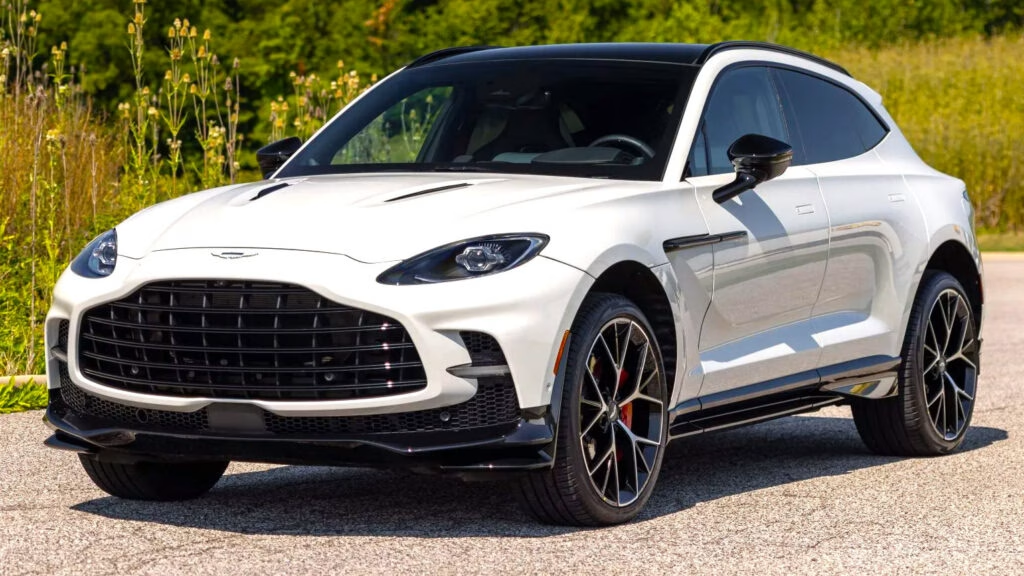Why Did a Nearly New Aston Martin DBX707 Lose $85,000 So Fast?
Let’s get right to it: a 2025 Aston Martin DBX707, barely broken in with just 3,700 miles, recently sold for $233,500 on Bring a Trailer. That’s a jaw-dropping $85,000 less than its original $318,000 sticker price—gone in a matter of months. If you’re wondering how a luxury SUV can shed value that quickly, you’re not alone. Let’s dig into what’s really going on here.
What Makes the DBX707 Stand Out in the Luxury SUV Crowd?
The DBX707 isn’t your run-of-the-mill family hauler. This is Aston Martin’s answer to the question, “How fast can an SUV really go?” With a twin-turbo 4.0-liter V8 pumping out 697 horsepower and 663 lb-ft of torque, this beast rockets from zero to 60 mph in just over three seconds. That’s supercar territory, all wrapped up in a package that can handle a grocery run or a cross-country road trip.
But it’s not just about speed. The example that just sold was loaded: Upper Carbon Pack, smoked taillights, 23-inch wheels, and a 23-speaker Bowers & Wilkins sound system. The interior? Two-tone Obsidian Black and Ivory leather, Alcantara headliner, carbon fiber trim, heated and ventilated seats front and rear, adaptive cruise, panoramic sunroof—the works. Even the doors are swan-hinged, because why not?
Is Depreciation This Bad for All High-End Cars?
Here’s the thing: luxury vehicles, especially those with six-figure price tags, are notorious for rapid depreciation. It’s not just an Aston Martin problem. Recent data from iSeeCars shows that luxury vehicles can lose up to 50% of their value in the first five years, and some models fare even worse. For example, the Jaguar I-PACE has reportedly lost over 70% of its value after five years. Porsche and Tesla have seen similar stories—one Porsche lost $70,000 in value after just 1,800 miles, and a Tesla Model 3 dropped by half after 35,500 miles.
Why Do Expensive Cars Lose Value So Quickly?
There are a few reasons why depreciation hits luxury cars so hard. First, the pool of buyers is smaller—fewer people can afford or are willing to spend big money on a used high-end car, no matter how nice it is. Second, technology and design move fast in the luxury segment. Today’s must-have features can feel outdated in just a couple of years, especially as automakers race to add the latest tech or electrification.
And let’s not forget the psychology of luxury ownership. For many buyers, it’s about having the newest, flashiest thing. Once a car is “last year’s model,” it loses some of its luster, even if it’s barely been driven.
Is Buying a Lightly Used Exotic SUV a Smart Move?
If you’re in the market for a luxury SUV and don’t mind letting someone else take the depreciation hit, buying nearly new can be a savvy play. The new owner of this DBX707 gets all the performance, luxury, and exclusivity, but with an extra $85,000 still in their pocket. That’s enough to cover years of maintenance, insurance, and fuel—or, let’s be honest, a couple of very nice vacations.
Of course, there are trade-offs. Warranty coverage may be shorter, and you might not get to pick every last option. But for many buyers, the value proposition is hard to ignore.
What Does This Mean for the Future of Luxury Car Values?
The luxury market is in flux. As more buyers shift toward electric vehicles and as economic uncertainty lingers, high-end cars are facing steeper depreciation curves than ever. According to a 2024 report from Edmunds, the average luxury vehicle now loses about 48% of its value after three years—up from 42% just five years ago. That’s a big jump, and it’s forcing both buyers and sellers to rethink their strategies.
The big takeaway? Chasing the latest and greatest isn’t about perfection—it’s about smarter adjustments. Start with one change this week—maybe research lightly used models before buying new—and you’ll likely spot the difference by month’s end.

